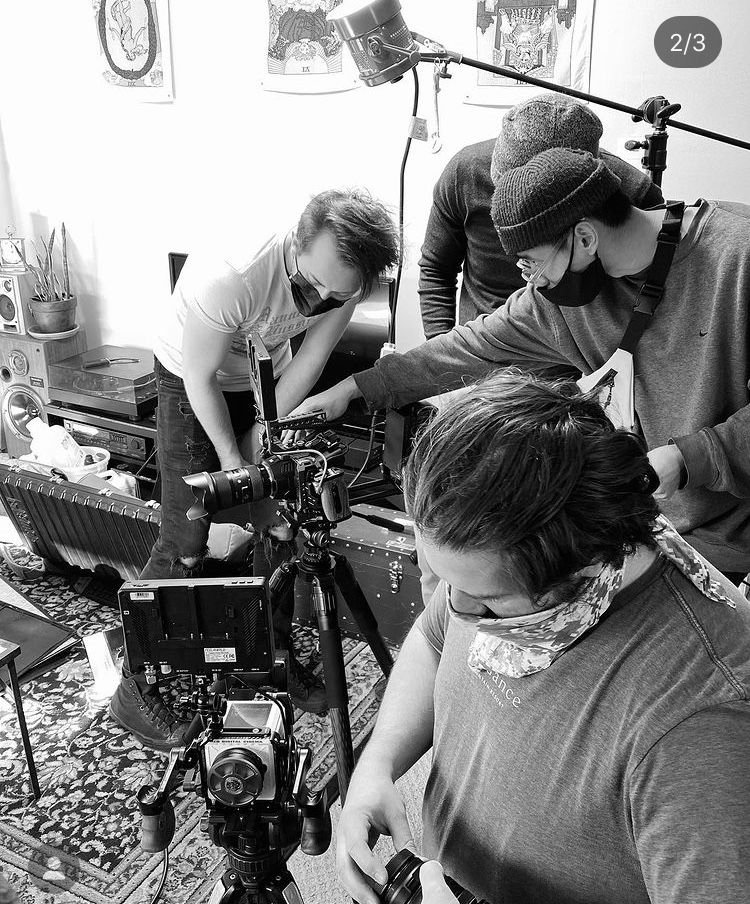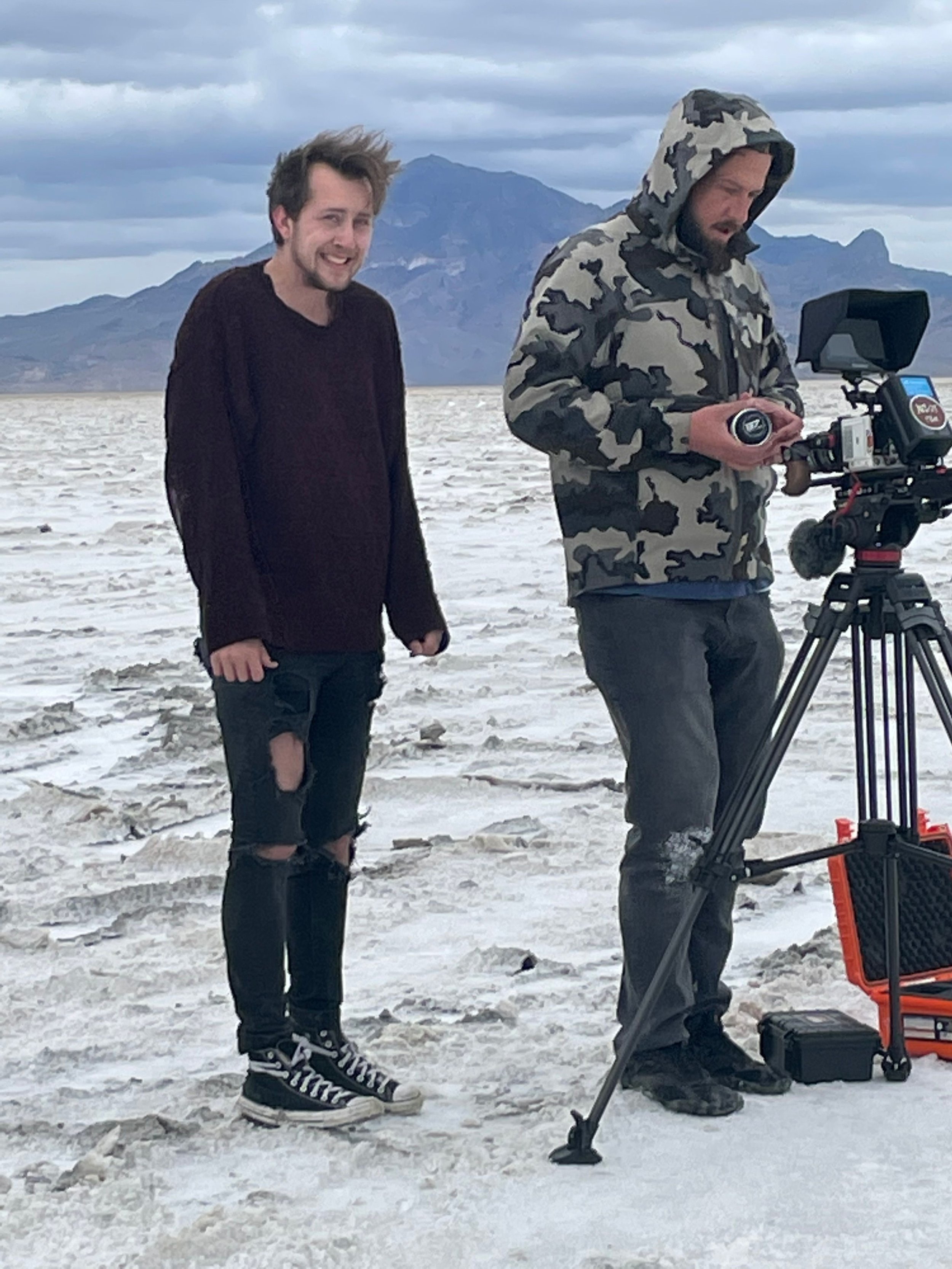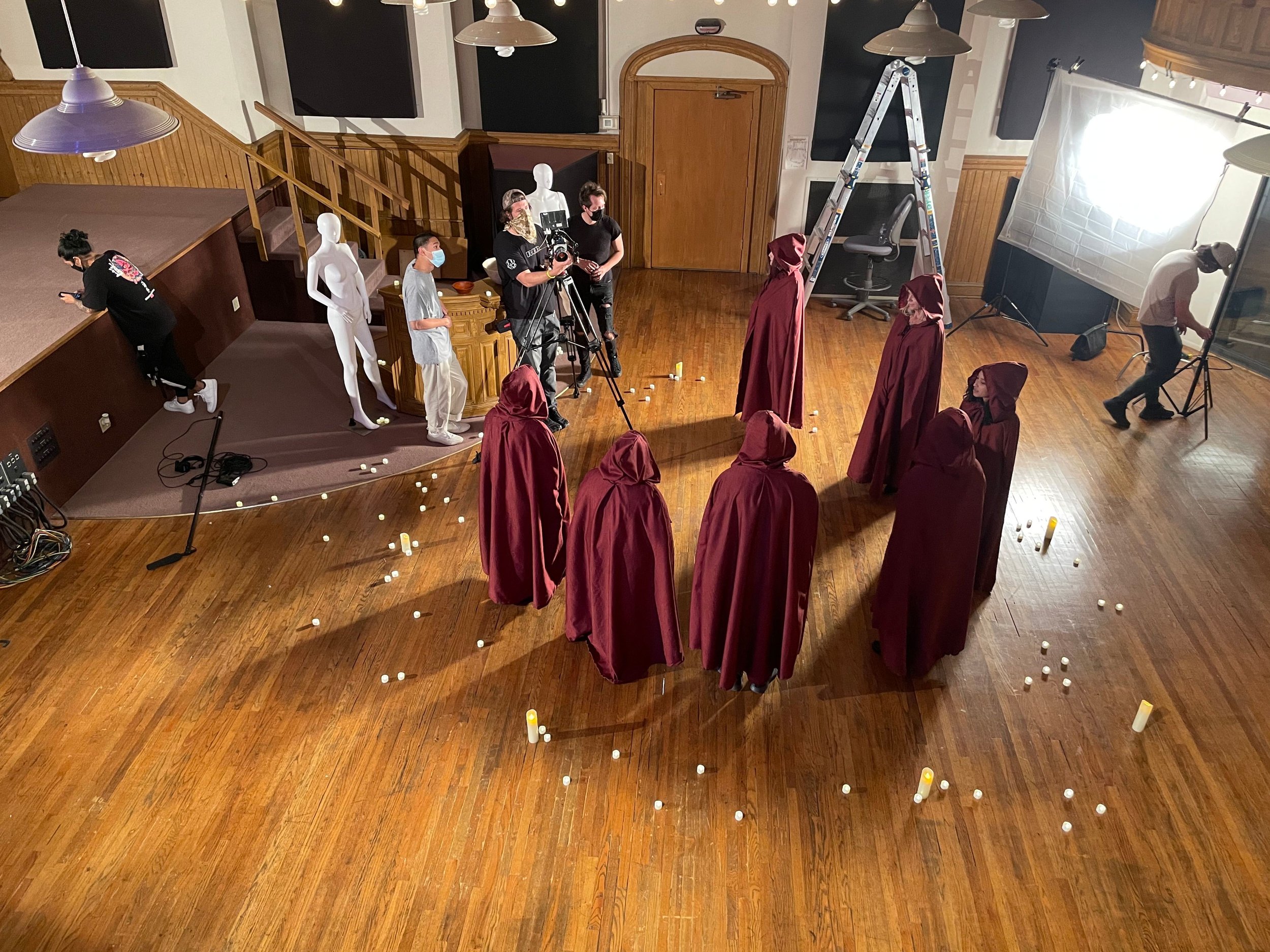THE COLD, BLEAK TERROR OF ISOLATION: ZFA INTERVIEWS DIRECTOR MITCHELL RICHMOND ABOUT ART HAUS HORROR FILM “78”
ZFA loves visceral, gritty horror, a theme that is well-encompassed in the Best Horror Film winner “78.” Inspired by COVID-19 and the pandemic in terms of isolation, claustrophobia, and germaphobia, this art haus piece is a gem, and we were excited to interview “78” director and SLC arts advocate Mitchell Richmond about influences, inspirations, and tips for getting out there and creating, even when experiencing a global pandemic.
ZFA: What inspired you to create this film? Any influences?
Mitchell: 78 was directly inspired by my personal experience and fear of living through the COVID-19 Pandemic in 2020. In the beginning of the lockdown, when nobody knew exactly what the future looked like, the atmosphere felt bleak and cold, I spent my days filling time with anything I could to pass the days faster. It was also during the pandemic where I realized that I had an incredibly deep seeded fear of the idea of contagions. I don't consider myself to be a germaphobe by any means, but the part of contagions that really makes me uncomfortable is the idea that I can have these invisible, potentially undetectable, things inside my body that simply, by me being in contact with someone, could cause them harm. It’s something that still gives me the heebie jeebies just thinking about.
All of that being said, I had a lot of time to sit and think during the lockdown. I spent my time watching the news, spending time with my roommate. And I think the isolation just allowed me to sit and really analyze social & interpersonal dynamics. Somewhere in the perpetual stew that is my mind, the idea for 78 managed to work its way to the surface.
As far as influences, I took A LOT of inspiration from Stanley Kubrik, David Lynch, David Fincher, and Japanese novelist Haruki Murakami.
ZFA: Where did you film it? And how long did it take?
Mitchell: Principal photography for 78 lasted 3 days, and it was all shot in Salt Lake City at my apartment in The Marmalade District in Salt Lake City, just a few streets away from the state capitol building. The rest of the film was shot a couple months later at the Salt Flats & the Urban Arts Alliance’s Art Castle (formerly known as LA EAST STUDIOS, where lots of film scores and albums were recorded in the past, including the music for Jurassic Park). So actual on set days only amounted to 6 days.
Post production, on the other hand, almost took a full year. All of the editing, coloring, sound design, and working with my composer was only able to take place between my personal on set gigs I had around town.
ZFA: The jurors commented on how you were able to capture feelings of anxiety and claustrophobia within the locations used. How were you able to achieve that?
Mitchell: I think a lot of the way I was able to achieve the feelings of anxiety and claustrophobia are due to a couple big things. A huge inspiration to me is Stanley Kubrik. The way he directs his camera & editing as more of a tool rather than just a method of story delivery is huge to me. If you watch The Shining, or 2001: A Space Odyssey, you can see he uses a lot of really drawn out shots, slow editing, and music to really accent what he's trying to convey in his films. By no means do I think I nailed his mastery of the film language, but I've learned a lot from just watching and analyzing his films. I think a combination of the tight shots (Lenni Uitto), slow editing, and incredible unconventional music from my wonderful composer Spencer Ditta, allowed me to really solidify the mood of unease and anxiety that I was going for in 78.
Another thing I used to help solidify the uneasy feeling throughout the film was the prominent use of sound design. Heavily inspired by David Lynch’s Eraser Head and David Fincher’s The Girl With The Dragon Tattoo, having the constant atmospheric drone of household appliances and faulty lights, as well as exterior forces, really helps establish the hostility of the world these characters are living in.
ZFA: What was the biggest challenge you faced during production and/or post-production?
Mitchell: Honestly, I think the biggest challenge I had was the budget constraints. Because this film was almost entirely self funded, I had to take on a lot of things that I've never had to handle before. We Shot with 4 completely different cameras (RED Komodo, BMPCC 6k, BM URSA 4.6K, & Sony A7rII) . I wasn't able to afford any post production, so all of the color grading was done by me, which means I had to do my best to color match all of these wildly different cameras. I also had to learn how to do all of my post audio work (which I previously had no experience with).
While frustrating at times, I am grateful to have learned the post-production skills to have a better understanding of all of the filmmaking process from start to finish.
ZFA: What was the most memorable moment on set?
Mitchell: I think shooting the first take of the cult scene was definitely the most personally memorable moment on set. Even though I wrote it, having the absurdity and disgustingness of it come off the page and into real life was incredibly surreal. Huge shout out to Dennis Record for conveying my cult leader in such an incredible and shocking way.
Also a big memory from that particular shoot was - as we rolled on the first take of our cult scene, Dennis fully committed to his character and gave such a wild and convincing performance that one of the extras acting as a cult member had to step out mid take and take a breather. I called “cut” and ran outside to make sure everything was okay, and she told me that “even though you explained everything that was going to happen, I guess I wasn't mentally prepared enough to actually see it happen.” I did feel bad to cause such distress to her, but she was all good after a couple minutes outside. I think it was the first moment of the shoot where I was convinced that what I had written was reading exactly as terrifying as I wanted it.
ZFA: Any lessons learned or things you would have done differently?
Mitchell: I wish I would have given myself a bit more time to fully explore the scenes and be thorough with our approach. While I believe we only went over 12hrs on one of the shooting days, we did end up having to have a full pick up day to reshoot a couple scenes because of missing shots or small changes in line delivery.
ZFA: Any advice for aspiring filmmakers?
Mitchell: If I had any advice at all, I would say just go for it. Explore your interests. Don't do things because you think they’re correct and will make you famous. Only do something because it truly calls to you. We live in a really amazing time where a film can be made by anyone with the time and passion for it. Explore yourself and follow what you truly believe in. Money and gear aren't the things holding you back anymore, it's just dedicatio. Get out there, make a film, and then another one, and another, and another. It doesn't matter what they are, as long as they’re for YOU.
ZFA: How can we find you and follow your work?
Mitchell: So my instagram is @pronounced.mister
I post a lot of art, music, and short experimental films. You can also visit my website mitchellrichmond.com
I also co-own a SLC based Non-Profit called DOWNHAUS. We aim to support & champion local artists by giving them a platform to get their art into the public eye and make a living off this social necessity that is so often looked at as a luxury. We hold a lot of art shows, concerts, & film screenings all around Salt Lake City. You can find us on Instagram @Down.Haus or on our website downhaus.org
Love y’all,
MR
Interview - Alicia Oberle Farmer









